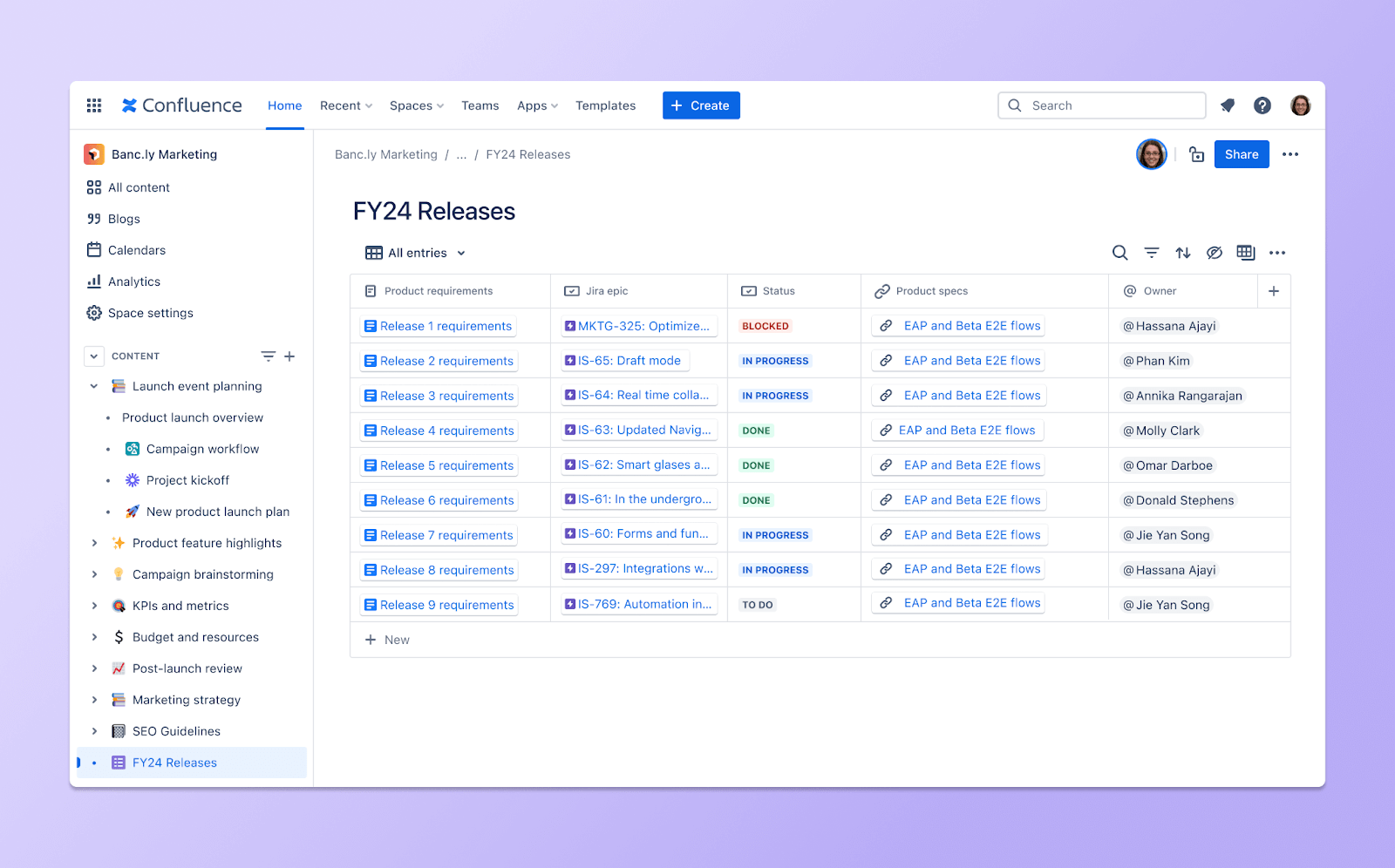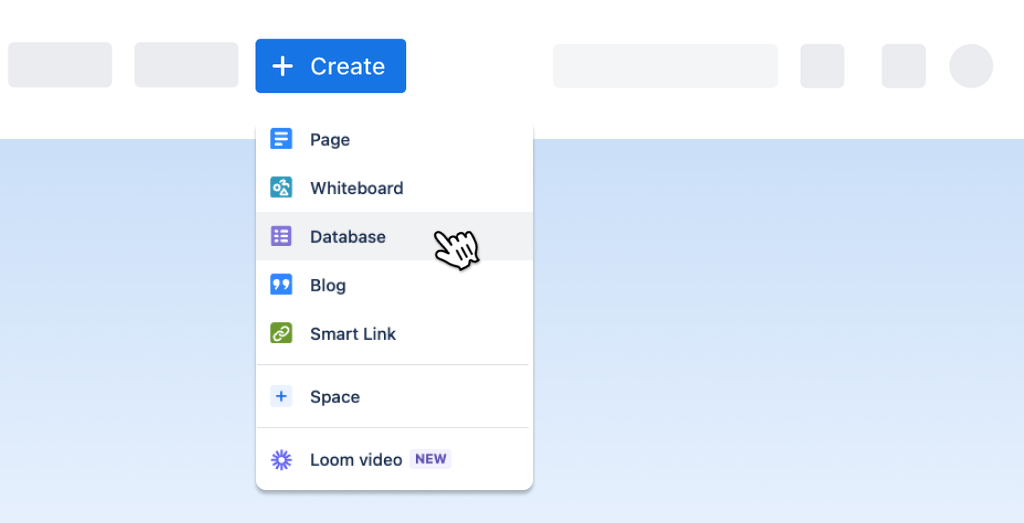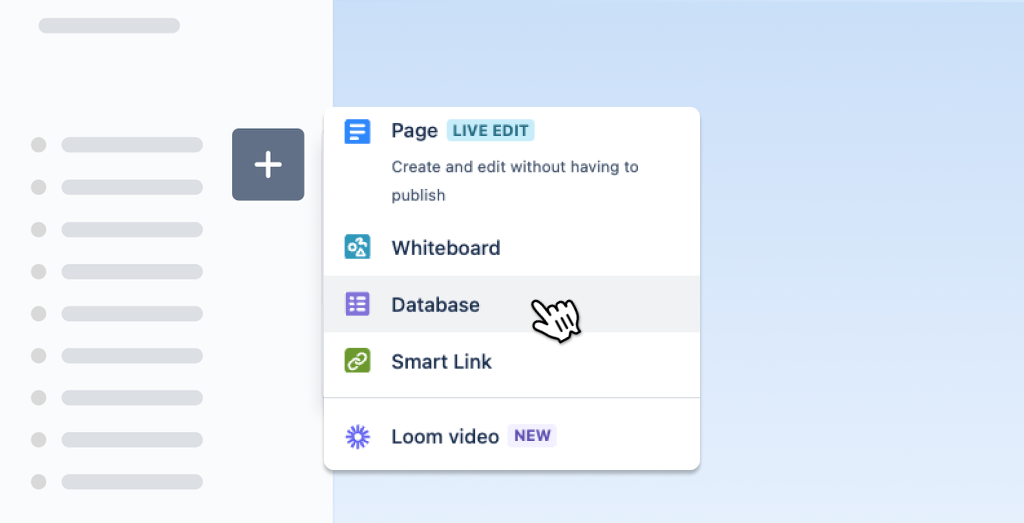Organize structured data with databases
According to Gartner, the average desk worker relies on 11 applications to complete their daily tasks. With so many tools at our disposal, it's no wonder that many workers struggle to stay organized and productive. The constant toggling between different apps can lead to distractions, confusion, and, ultimately, a decrease in efficiency.
This is where Confluence databases come into play, offering a centralized solution for you to create, manage, and contextualize all of your important information in a clear and organized manner.
In this piece, we'll delve into the fundamentals of getting started with Confluence databases. Whether you're new to Confluence or looking to optimize your existing workflows, we'll provide step-by-step guidance to help you unlock the full potential of Confluence databases.
What are Confluence databases?
A database is a structured collection of information. In Confluence, databases serve as organized repositories within the platform, facilitating the systematic storage, retrieval, and management of diverse data sets. These structured databases empower teams to efficiently structure, reference, and display information, offering a centralized and customizable solution for collaborative workspaces.
Teams can utilize Confluence databases to create a comprehensive information repository and aggregate tools, links, and data from internal and external sources. This consolidated view can be customized to meet specific needs, serving as a centralized hub for accessing and managing content.

For example, you could use databases to store and categorize information related to various projects, such as project plans, meeting notes, owners, and relevant Jira links. You could also use databases to store and share important company policies, procedures, and guidelines.
Confluence databases offer several benefits:
- Seamlessly connect and structure information: Confluence databases make it quick and easy for multiple teams to store and access data simultaneously. The structured format and pre-defined field types keep inputs consistent, ensuring uniformity and clarity across entries.
- Obtain a curated view of relevant work: Confluence databases allow you to bring in information from multiple sources, including Jira tasks, Confluence pages, and external data, and combine them into a curated view. This curated view provides a comprehensive perspective on your project landscape, enabling you to focus on the work that is most relevant to your goals and objectives. By aggregating and organizing data in a centralized database, you can easily access and manage the information that matters most to your team's success.
- Stay up-to-date: Real-time syncing between entries ensures that you and your team always have access to the most current information – no more outdated spreadsheets and manual updates.
- Customize data display: Tailor the display of information to suit your preferences. With sorting and filtering options, you have the power to create a personalized view that suits your unique needs. Whether in tables, cards, or boards, Confluence databases offer flexible information presentation options that enhance data visualization.
With Confluence databases, say goodbye to information overload and hello to a streamlined, organized, and collaborative workspace. It's time to take control of your content and elevate your team's productivity to new heights.
Visual collaboration with whiteboards
Learn how Confluence Whiteboards enables visual collaboration.
CONFLUENCE APPS AND INTEGRATIONS
Learn how to integrate Confluence with your favorite business tools.


